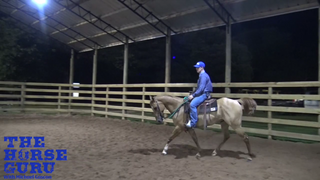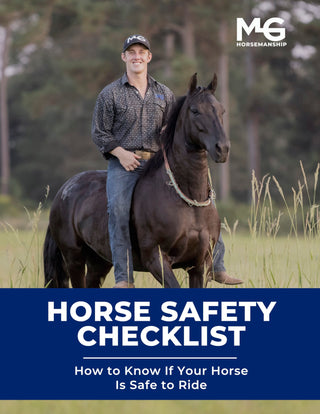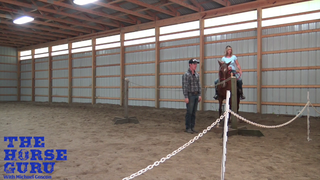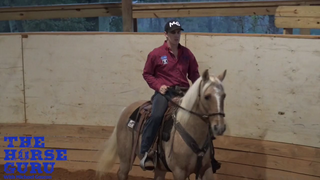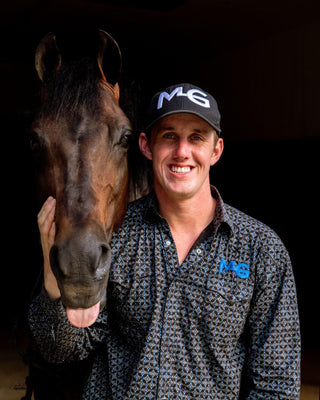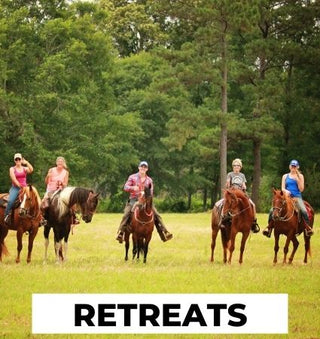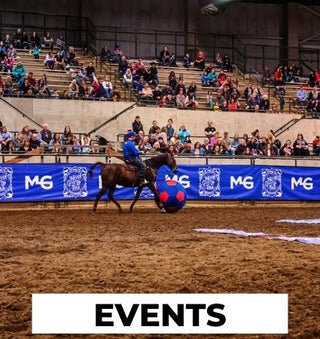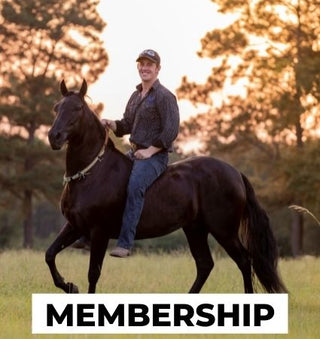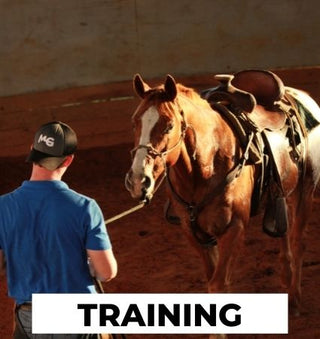Watch the Video Here or continue reading below!
When it comes to getting a better stop, especially in Western riding, there's more to it than just yanking the reins and hoping your horse responds. In this blog post, we’re going to walk you through the key elements of training your horse to stop correctly—from the fundamentals to the building blocks of a great sliding stop. Whether you're training for ranch work, Western pleasure, or reining, understanding these layers will help you set your horse up for success.
Two Kinds of Stops: The Surprise Stop vs. the Western Stop
In the early stages of training, you may teach your horse a “surprise stop”—where you sit back, gather the reins, and shut the horse down abruptly. It’s a green-level tactic that establishes basic respect for the bridle.
But for a true Western stop, especially one that leads to a sliding stop, you need more refinement. Your horse has to draw into the stop, willingly bringing his hind end underneath himself while staying soft in the bridle and responsive to your seat and legs.
What You Need for a Quality Sliding Stop
Before you aim for a dramatic 30-foot slide, understand that the biggest secrets to a sliding stop aren't all that secret:
-
Consistent Training Layers – Sliding takes time, practice, and lots of repetition.
-
The Right Horse – Some breeds (like Quarter Horses) are built for it.
-
Sliders (Shoes) – Special sliding plates reduce traction on the back hooves, allowing the horse to glide.
But before you even think about sliding shoes, let’s focus on what really matters: building a responsive stop at any speed.
Why Head Position Matters in the Stop
If your horse has his head high and nose poked out, he's not in a position to stop well. He might plant and halt abruptly, but he won’t draw into the stop. This is why head position and softness are critical. Before stopping, your horse should:
-
Move forward willingly.
-
Keep his head low and soft.
-
Be responsive to flexing and pressure.
If you stop while your horse is braced or leaning on your hands, you'll ruin your stop and create resistance.
Flex First: Setting Up for the Stop
Before each stop, make sure your horse is soft and giving in the bridle. Start by flexing laterally until your horse is relaxed and not leaning into the reins. When you feel that softness:
-
Begin at a trot or canter.
-
Sit deep in the saddle and take your legs off.
-
Let your horse draw back into the stop—don’t yank.
-
If he resists, hold until he gives his face, then release.
Over time, your horse will learn to associate your seat and leg cues with stopping and start anticipating the stop the moment your legs come off.
Don’t Surprise the Horse—Draw Him Into It
Here’s the game-changer: Don’t surprise your horse with the stop. Instead, teach him to be soft before the stop ever happens. Every transition—whether it’s walk to trot, trot to canter, or canter to stop—should begin with a soft face.
You’re not punishing; you’re inviting the horse into the stop.
Off-Center Stops: A Helpful Trick
If your horse braces against the reins during the stop, try this: stop him off-center. Lock one rein against your leg and stop using only the other. This reduces his power by shifting him out of alignment, making it easier for him to yield and draw into the stop instead of leaning.
This trick helps you break the habit of leaning on both reins and builds softness and respect, one side at a time.
Prepare for Speed, But Master the Slow First
You don’t need to be at a gallop to start teaching the sliding stop. In fact, you should never ask for speed before softness. The horse must be able to:
-
Stop from a slow gait without bracing.
-
Tuck his hind end under.
-
Maintain a low, soft frame.
Until you’ve nailed this at a walk, trot, and lope, there’s no need for sliders. Without them, a horse naturally has too much traction to slide anyway—thanks to the grip built into the frog of the hoof.
Timing Is Everything: Seat, Legs, and Rein Cues
A big part of stopping well is timing your cues correctly:
-
Take your legs off first to signal a change.
-
Sit deeply to cue the stop.
-
Keep your hands steady, not pulling back.
-
Only stop when your horse is soft in the bridle.
Watch for resistance. If the horse noses out, back him up softly and try again. You’re not punishing—you’re resetting the expectation.
The Takeaway: Teach the Horse to Want the Stop
A great stop doesn’t come from brute force. It comes from building a horse who:
-
Respects pressure.
-
Gives willingly.
-
Anticipates the stop with softness and balance.
Train for the stop at slow speeds first. Then, when the horse is ready, you can add sliders and begin working toward longer, more dramatic stops. Just remember: a horse that can’t stop well slowly will never stop well at speed.
Ready to Get a Better Stop?
Start today by focusing on softness, timing, and drawing your horse into the stop—not just shutting him down. Whether you're on a green colt or finishing a performance horse, the principles are the same.


